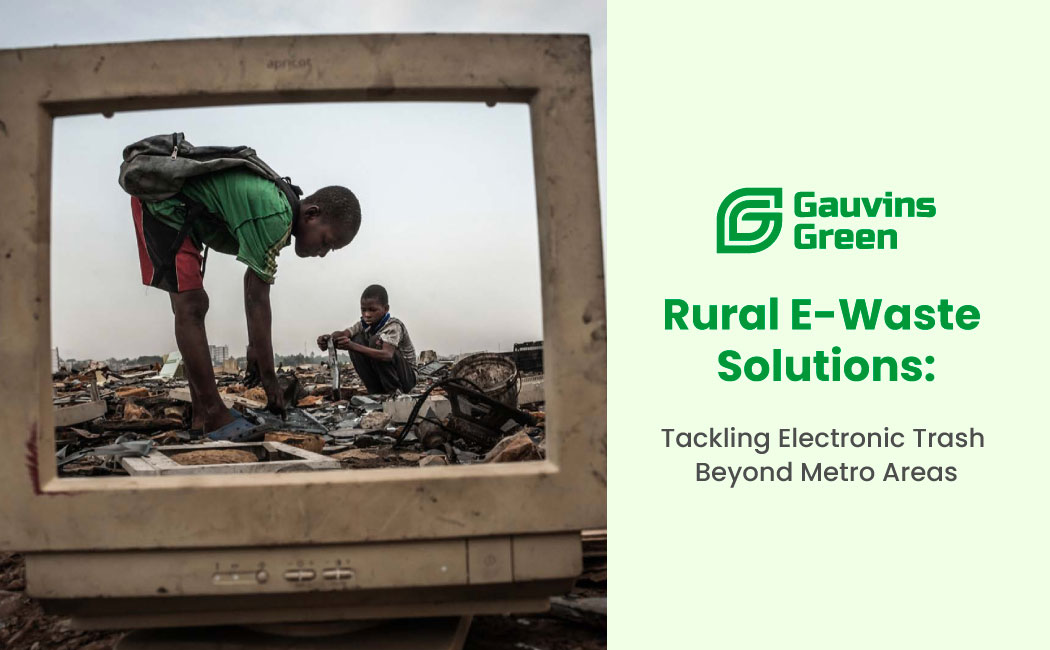|
Getting your Trinity Audio player ready...
|
Table of Contents
ToggleThe Process of Metal Recovery Through E-Waste
In our rapidly advancing technological era, electronic devices have become an integral part of our lives. However, the continuous cycle of upgrading gadgets leads to a mounting electronic waste, or e-waste, problem. Fortunately, this electronic waste is a treasure trove of valuable metals that can be recovered and reused in an eco-friendly manner. In this blog, we will delve into the fascinating process of metal recovery through e-waste, showcasing how recycling not only reduces environmental impact but also conserves precious resources.
E-Waste Collection and Sorting:
The process of metal recovery begins with the collection of discarded electronic devices, such as smartphones, computers, tablets, and other gadgets. E-waste management companies collaborate with businesses, governments, and individuals to ensure the proper and responsible collection of these items. Once collected, the e-waste is sorted based on the type of electronics and the metals they contain.
Dismantling and Segregation:
After sorting, the e-waste undergoes dismantling, where skilled technicians disassemble the devices to separate various components. Different electronic devices contain distinct metals, such as gold, silver, copper, palladium, and rare earth metals, among others. Efficient segregation at this stage is crucial to maximize the recovery of valuable metals.
Mechanical Processing:
Once segregated, the e-waste components undergo mechanical processing. This step involves shredding or crushing the materials to reduce them to smaller particles, making it easier to extract the metals. The shredded e-waste is then subjected to advanced separation techniques to isolate the various metals present.
Hydrometallurgical Recovery:
Hydrometallurgical recovery is a common method used for extracting metals from e-waste. In this process, the shredded material is treated with chemical solutions that selectively dissolve the targeted metals. After dissolving, these metals are separated from the solution, purified, and prepared for further processing.
Pyrometallurgical Recovery:
Another technique employed for metal recovery from e-waste is pyrometallurgy. This process involves subjecting the shredded e-waste to high temperatures, causing the metals to melt and separate from other materials. Once the metals have cooled and solidified, they are collected for purification and subsequent reuse.
Refining and Purification:
After the initial extraction, the recovered metals might still contain impurities. To achieve the desired quality and purity, further refining and purification processes are employed. These processes remove any remaining contaminants, ensuring that the metals meet industry standards and are ready for reuse in various applications.
Reuse in Manufacturing:
The purified metals are now ready to be reintroduced into the manufacturing cycle. Manufacturers can use these recovered metals to produce new electronic devices or incorporate them into other industries like automotive, aerospace, and renewable energy sectors. This reduces the need for mining virgin resources, conserving natural reserves and reducing the environmental impact associated with metal extraction.
Conclusion:
The process of metal recovery through e-waste is an essential aspect of sustainable waste management and resource conservation. By recycling discarded electronic devices, we not only mitigate the environmental impact of e-waste but also recover valuable metals that can be reused in manufacturing processes. As the world strives for a more sustainable future, embracing responsible e-waste recycling and metal recovery will play a crucial role in preserving our planet’s precious resources. By supporting recycling initiatives and e-waste management programs, we all contribute to a greener, more circular economy, and pave the way for a brighter and more sustainable tomorrow.




